Unconventional Materials for Quilting: What Can You Use?
Are you ready to take your quilting projects to the next level? If you've been sticking to the same old fabrics and batting, it’s time to shake things up! In this article, we will explore some innovative materials that can enhance your quilting experience. From recycled fabrics to unexpected items like plastic bags, the world of quilting is brimming with possibilities that not only boost your creativity but also promote sustainability. Let's dive into these unconventional materials and discover how you can incorporate them into your quilting projects!
Using recycled fabrics is a fantastic way to promote sustainability while adding unique character to your quilts. Imagine turning old clothing or fabric scraps into a beautiful quilt that tells a story! To source these materials, consider visiting local thrift stores, flea markets, or even your own closet. When selecting recycled materials, look for fabrics that are still in good condition. Check for wear and tear, and don’t shy away from mixing different patterns and textures. The beauty of recycling is that it allows you to create one-of-a-kind pieces that reflect your personal style.
Believe it or not, plastic bags can be transformed into durable quilted pieces! You might be wondering how that’s even possible. Well, with a bit of creativity and some basic techniques, you can cut, fuse, and stitch plastic bags to create functional and eye-catching quilts. The process starts with collecting plastic bags—think grocery bags, bread bags, and even bubble wrap. Once you have a stash, you can cut them into strips or shapes and fuse them together for a sturdy base.
Adding texture to your quilts using plastic materials can enhance visual interest and tactile appeal. Try layering different colors and patterns of plastic for a striking effect. You can also experiment with stitching techniques to create unique results. For instance, using a zigzag stitch can help secure layers while adding an artistic flair. The possibilities are endless, and the results are sure to surprise!
When it comes to fusing plastic bags, understanding the best practices is crucial for ensuring durability and longevity in your projects. Start by layering your plastic pieces and using an iron on a low setting to fuse them together. Be cautious not to overheat, as this can cause melting. Once fused, you can treat the plastic as you would traditional fabric, cutting and stitching it into your quilt design.
Innovative design ideas using plastic can truly elevate your quilting game. Think about incorporating themes like ocean conservation or recycling into your designs. You could even create patterns that mimic natural elements, such as waves or leaves, using different shades of plastic. The key is to let your imagination run wild and see where it takes you!
Why not blend traditional fabrics with plastic materials for a mixed-media approach? This combination can yield stunning visual contrasts and functional quilts. Imagine the softness of cotton paired with the glossy texture of plastic—what a delightful surprise! You can create pockets, embellishments, or even entire sections of your quilt using plastic, adding both functionality and style.
Natural fibers like hemp and bamboo can provide unique textures and eco-friendliness to your quilting projects. These materials are not only sustainable but also add an organic touch to your quilts. Hemp, for instance, is known for its strength and durability, making it an excellent choice for quilts that will see a lot of use. Bamboo fabrics, on the other hand, offer incredible softness and moisture-wicking properties, ensuring comfort in every stitch.
Hemp is a strong and sustainable option for quilting. It’s breathable and becomes softer with each wash, making it a practical choice. When incorporating hemp into your designs, consider pairing it with other natural fibers for a cohesive look that showcases the beauty of sustainability.
Bamboo fabrics are not only soft but also have natural antibacterial properties, making them a great choice for quilts. They are moisture-wicking, which means they help keep you comfortable in various temperatures. When using bamboo, consider its drapability and how it can complement other fabrics in your quilt.
Exploring unconventional batting materials can enhance your quilt's warmth and weight. Traditional cotton batting has its merits, but alternatives like wool and synthetic options can provide unique benefits. Wool batting, for example, offers excellent insulation and breathability, making it perfect for year-round use. Synthetic batting, on the other hand, is often more affordable and easier to care for, making it a popular choice for beginners.
Wool batting provides excellent insulation and breathability, which can improve the overall quality of your quilt. It helps regulate temperature, keeping you warm in winter and cool in summer. Plus, it's naturally resistant to mold and mildew, ensuring your quilt stays fresh and clean.
Synthetic batting offers affordability and ease of care. With various types available, you can choose the one that best fits your project needs. Whether you’re making a lightweight summer quilt or a heavy winter blanket, synthetic options have you covered.
Upcycling textiles from old clothing or linens can add a personal touch to your quilts. This process allows you to transform items that may have sentimental value into beautiful quilted pieces. Imagine turning your grandmother’s old dress into a cozy quilt that you can cherish forever. The key is to assess the quality of the textiles and how they will work together in your design.
Selecting the right upcycled textiles is crucial for achieving desired results. Look for fabrics that are still sturdy and free from stains or tears. Mixing different textures and colors can create a dynamic quilt that stands out.
Discover innovative techniques for upcycling textiles, such as patchwork and appliqué methods. These techniques allow you to create unique designs that tell a story, making your quilt not just a functional item but a piece of art. The beauty of upcycling is that every quilt can be a reflection of your journey and creativity.
- What are some common recycled materials for quilting? You can use old clothes, fabric scraps, and even curtains or linens.
- Can I really use plastic bags for quilting? Yes! With the right techniques, plastic bags can be transformed into durable and creative quilt pieces.
- What are the benefits of using natural fibers? They are sustainable, eco-friendly, and often more breathable than synthetic options.
- How do I choose the right batting for my quilt? Consider factors like warmth, weight, and ease of care. Wool is great for insulation, while synthetic options are often easier to maintain.
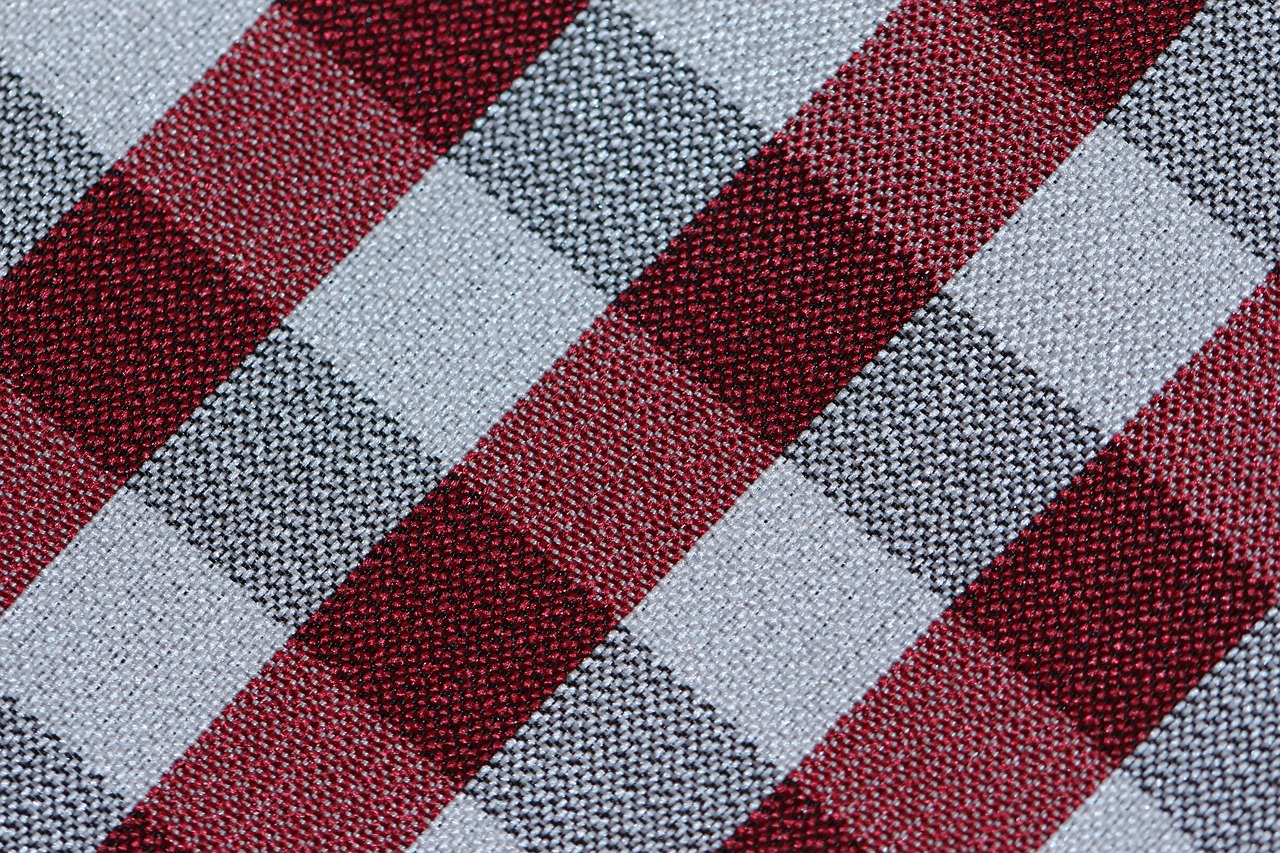
Recycled Fabrics
Using not only promotes sustainability but also adds a unique character to quilts that new materials simply can't replicate. Think about it: every piece of recycled fabric carries a story, a history that can transform your quilting project into a personal narrative. When you choose to work with recycled materials, you're not just creating a quilt; you're making a statement about your values and your commitment to the environment.
So, where do you find these treasure troves of recycled fabrics? Your local thrift stores, garage sales, and even your own closet can be gold mines for quilting materials. Old garments, curtains, and linens can all be repurposed into beautiful quilt pieces. Just imagine turning a beloved but worn-out shirt into a cozy quilt square that sparks memories every time you see it!
When selecting recycled materials, consider the following tips to ensure that your quilt is both beautiful and durable:
- Assess the Quality: Check for any stains, tears, or odors that might compromise the fabric's integrity.
- Color Coordination: Think about how the colors of your recycled fabrics will work together. A cohesive color palette can create stunning visual effects.
- Fabric Type: Different fabrics behave differently when quilted. Cotton is a popular choice, but don’t shy away from experimenting with blends!
Once you've gathered your materials, the real fun begins! You can experiment with different quilting techniques that highlight the unique textures and patterns of your recycled fabrics. For instance, a patchwork approach can create a vibrant quilt that tells a story through each piece. You might even consider combining various fabric types to add depth and interest. The possibilities are endless!
Moreover, using recycled fabrics can significantly reduce waste, making your quilting projects more environmentally friendly. As you stitch together your quilt, you're not just creating art; you're contributing to a more sustainable future. With every quilt made from recycled materials, you’re helping to divert textiles from landfills and reduce the demand for new fabric production.
In conclusion, incorporating recycled fabrics into your quilting projects opens up a world of creativity and sustainability. So, next time you're about to throw away an old piece of clothing, think twice! It might just be the perfect addition to your next quilt. Embrace the charm of recycled fabrics and let your creativity flow!
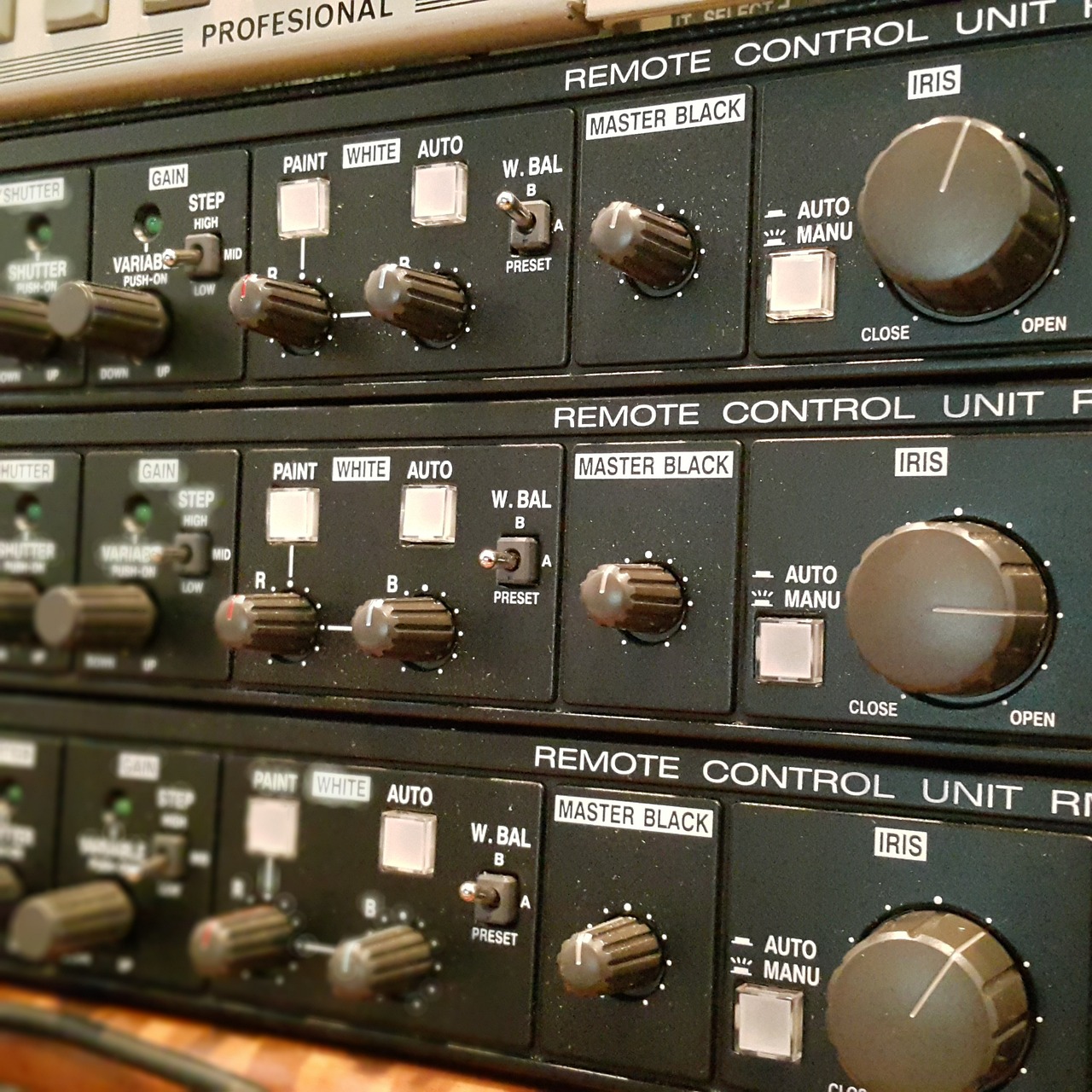
Plastic Bags
When you think of quilting, plastic bags might not be the first thing that comes to mind, right? However, these everyday items can be transformed into durable and unique quilted pieces that not only showcase your creativity but also promote sustainability. Imagine turning something that would typically end up in a landfill into a vibrant, functional quilt! In this section, we will explore various techniques for cutting, fusing, and stitching plastic bags, allowing you to create eye-catching quilts that stand out.
First off, let’s talk about sourcing plastic bags. You can use grocery bags, shopping bags, or even the ones that come with your online orders. The key is to select bags that are clean and free from any holes or tears. Once you have gathered your materials, it’s time to prepare them for quilting. Start by cutting the bags into strips or squares, depending on the design you have in mind. You can get creative with colors and patterns, mixing and matching different bags to create a visually stunning effect.
Now, you might be wondering how to fuse those plastic pieces together. Fusing is a crucial step that enhances durability and gives your quilt a cohesive look. You can use an iron set to a low temperature, placing a piece of parchment paper between the plastic and the iron to prevent any sticking. This will allow you to bond the layers without melting them completely. The result? A sturdy base that can withstand the test of time and wear. It’s like giving your quilt a superhero cape!
One of the most exciting aspects of using plastic bags in your quilting is the ability to add texture. By experimenting with layering and stitching techniques, you can create quilts that are not only visually appealing but also have a tactile quality that invites touch. Consider using different stitching patterns, such as zigzag or decorative stitches, to enhance the texture further. This can create a stunning contrast against the smoothness of traditional fabrics, making your quilt truly one-of-a-kind.
To ensure your plastic bag quilt holds up over time, mastering fusing techniques is essential. Here are some best practices to follow:
- Use a low heat setting: High temperatures can melt the plastic, so keep it low and steady.
- Work in small sections: This allows for better control and prevents the plastic from warping.
- Test before you fuse: Always do a test run with a scrap piece to see how the plastic reacts to heat.
By following these tips, you’ll create a robust foundation for your quilt, ensuring it remains intact through countless cuddles and adventures.
Now that you have the basics down, let’s dive into some innovative design ideas using plastic bags. Consider creating a themed quilt, like a beach-inspired design using blue and green plastic bags to mimic the ocean waves. Alternatively, you can create a patchwork quilt that tells a story through the different bags you use. Each piece can represent a moment or memory, adding a personal touch to your work.
Another fun idea is to incorporate embellishments such as buttons or fabric scraps to create a mixed-media quilt. The possibilities are endless! So, grab those plastic bags, and let your imagination run wild. Who knew that something so ordinary could lead to such extraordinary creations?
Don’t be afraid to blend traditional fabrics with your plastic materials for a mixed-media approach. This combination can yield stunning visual contrasts and functional quilts. For instance, pairing soft cotton with the rigidity of plastic can create a quilt that not only looks great but also serves a purpose—like a picnic blanket that’s easy to clean. The juxtaposition of textures can create a dynamic aesthetic that captures attention and sparks conversation.
In conclusion, plastic bags are not just waste; they can be transformed into beautiful, functional art pieces. By exploring these techniques and design ideas, you can expand your quilting repertoire while also making a positive impact on the environment. So, what are you waiting for? Dive into your stash of plastic bags and start creating!
Q: Can I use any type of plastic bag for quilting?
A: While most plastic bags can be used, it's best to choose thicker bags, like grocery bags, as they hold up better during the quilting process.
Q: How do I care for quilts made from plastic bags?
A: It's recommended to spot clean your quilt or hand wash it in cold water to maintain its integrity.
Q: Will my quilt be durable if I use plastic bags?
A: Yes! When properly fused and stitched, quilts made from plastic bags can be quite durable and long-lasting.
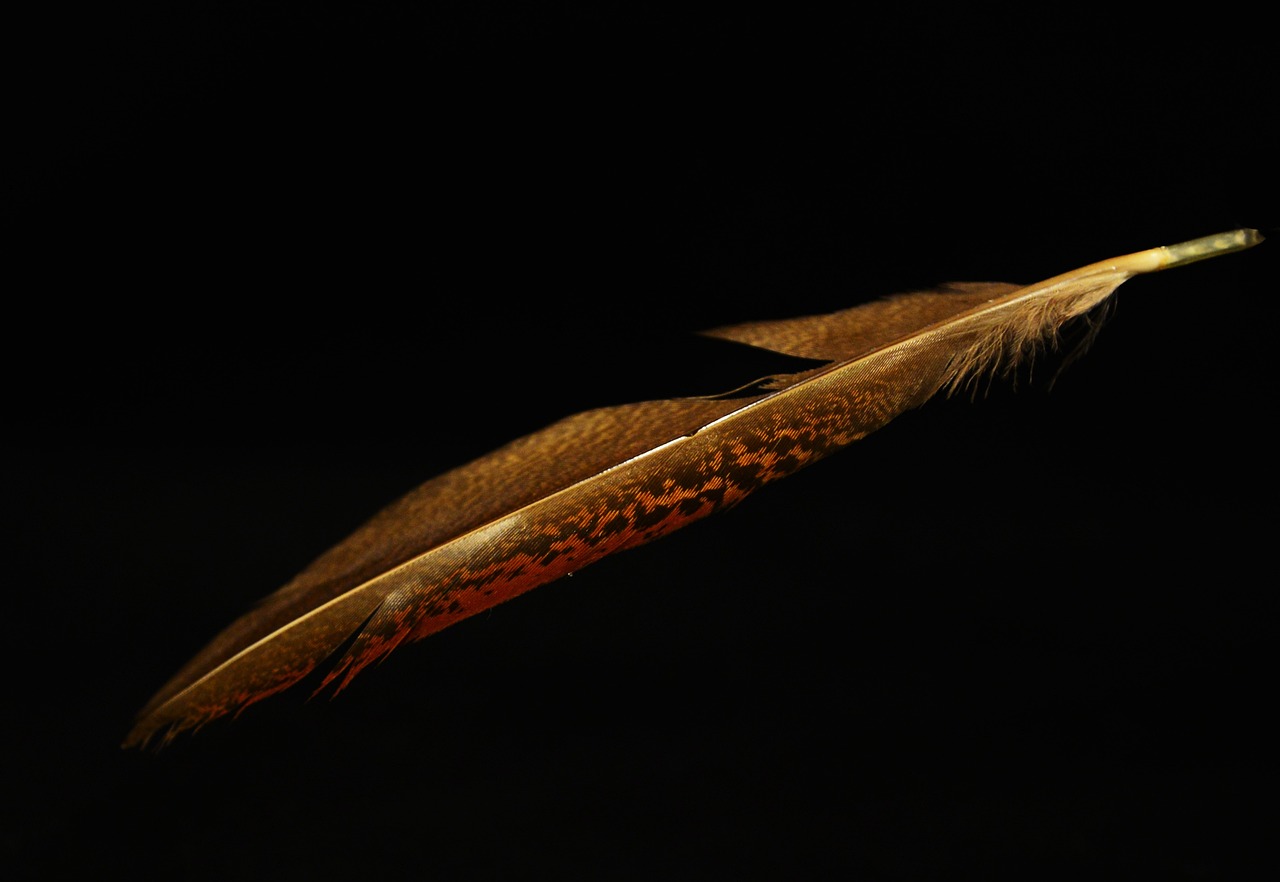
Creating Texture with Plastic
When it comes to quilting, texture is everything. It can transform a flat piece of fabric into a stunning piece of art that invites touch and admiration. Plastic materials, often overlooked, can provide a unique avenue for adding texture to your quilts. Imagine the crisp sound and feel of a plastic layer beneath your fingers, contrasting beautifully with the soft, traditional fabrics. This unexpected combination not only enhances visual interest but also adds an element of surprise to your quilting projects.
One of the most exciting aspects of using plastic is the ability to experiment with different techniques to create texture. For instance, layering various types of plastic can produce fascinating effects. You might consider using plastic wraps, grocery bags, or even plastic tablecloths. Each material has its own qualities, such as thickness and sheen, which can dramatically alter the look and feel of your quilt. By layering these materials, you can achieve a three-dimensional effect that draws the eye and adds depth.
Another method to enhance texture is through stitching techniques. Free-motion quilting can be particularly effective when working with plastic. This technique allows you to create intricate designs that pop against the smooth surface of the plastic. You can also try using decorative stitches to add flair and complexity to your quilt. The combination of traditional quilting stitches with plastic can yield stunning results that challenge conventional quilting norms.
Additionally, fusing plastic can create a sturdy base for your quilting projects. This method involves using heat to bond layers of plastic together, resulting in a durable and flexible material. Fused plastic can be cut, shaped, and stitched just like fabric, making it a versatile option for creating textured elements. When fusing, it's essential to use a low-temperature setting to avoid melting the plastic, and always use a pressing cloth to protect your iron.
To inspire your creativity, here are some exciting ideas for incorporating texture into your plastic quilts:
- Layering: Experiment with different colors and types of plastic to create a layered look.
- Quilting Patterns: Use free-motion quilting to add intricate designs that enhance the texture.
- Appliqué: Cut shapes from plastic and appliqué them onto your quilt for added dimension.
Incorporating plastic into your quilting repertoire not only opens up new avenues for creativity but also challenges the status quo of traditional quilting. The tactile experience of a quilt made with plastic elements can be both surprising and delightful, inviting viewers to engage with your work on a deeper level. So, grab those plastic bags and get ready to explore the exciting world of texture in quilting!
Q: Can I use any type of plastic for quilting?
A: While you can experiment with various plastics, it's best to choose materials that are flexible and can withstand heat, like plastic bags or tablecloths. Avoid rigid plastics that may crack or break.
Q: Will using plastic affect the washing and care of my quilt?
A: Yes, quilts with plastic elements may require special care. It's advisable to hand wash or spot clean them to preserve the integrity of the plastic materials.
Q: How do I ensure that the plastic stays securely attached to the fabric?
A: Fusing is a great method to secure plastic to fabric. Make sure to use a pressing cloth and low heat to avoid melting the plastic. Additionally, stitching around the edges can provide extra security.

Fusing Techniques
Fusing plastic bags into your quilting projects can open a world of creativity and innovation. This technique not only strengthens your quilt but also allows you to explore the unique properties of plastic. To begin, it’s essential to gather the right materials and tools. You'll need a cutting mat, a rotary cutter, and a hot iron. The process is straightforward, but attention to detail is key to achieving a durable finish.
First, you’ll want to prepare your plastic bags. Start by cutting them into flat sheets. This can be done by cutting off the handles and the bottom seam, then unfolding the bag. You can create various shapes and sizes depending on your design. Once you have your plastic sheets, it’s time for the fusing process. Layer the plastic sheets between two pieces of parchment paper to protect your iron and prevent any sticky residue from adhering to it.
Next, set your iron to a medium heat without steam. Slowly press the iron onto the parchment paper, moving it around to ensure even heat distribution. It’s important to apply consistent pressure for about 10-15 seconds, then lift the iron to check if the plastic is fused together. If it isn’t, repeat the process, adjusting the heat as necessary. Remember, the goal is to melt the plastic enough to bond it without burning it.
Once you have successfully fused your plastic sheets, you can cut them into your desired shapes and incorporate them into your quilt. You might want to consider using a zigzag stitch or a straight stitch to secure the edges of the fused plastic to prevent fraying. The combination of fusing and stitching can create a robust and visually appealing texture that enhances your quilt’s overall design.
One of the most exciting aspects of using fusing techniques is the ability to experiment with layering. By layering different colors and textures of plastic, you can create stunning visual effects. For instance, using transparent plastic bags can add depth and dimension to your quilt, allowing for light to play through the layers. This technique not only elevates the aesthetic but also adds a tactile element to your work, making it an engaging piece for both the eyes and hands.
In conclusion, mastering fusing techniques opens up a realm of possibilities in quilting. Not only does it enhance durability, but it also allows for creativity to flourish. As you experiment with these methods, you'll find that the process is as rewarding as the finished quilt itself. So, gather your materials, fire up that iron, and let your imagination run wild!
- What types of plastic bags work best for fusing? Generally, thicker plastic bags such as those used for grocery shopping yield better results. Avoid very thin bags as they may melt too quickly.
- Can I wash quilts made with fused plastic? Yes, but it’s advisable to use a gentle cycle and air dry to maintain the integrity of the fused materials.
- Is fusing plastic safe for quilting? Absolutely! When done correctly, fusing plastic is safe and can add unique characteristics to your quilts.
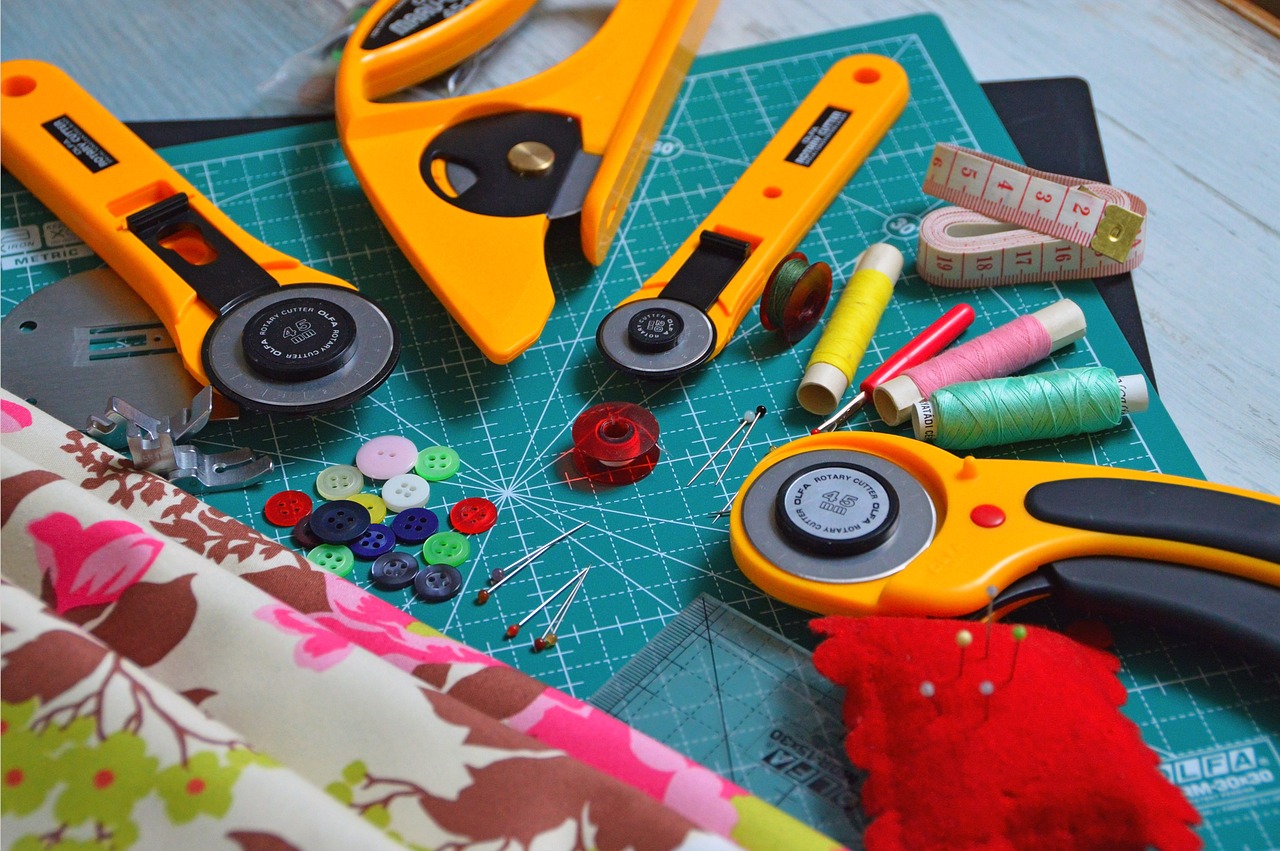
Design Ideas with Plastic
When it comes to incorporating plastic into your quilting projects, the possibilities are as vast as your imagination. Plastic materials can be used not just as a functional element but also as a striking design feature that can elevate your quilts to new heights. One popular method is to create vibrant patchwork designs that utilize colorful plastic bags. By cutting these bags into various shapes and sizes, you can mix and match them with traditional fabrics, creating a stunning contrast that captures the eye.
Another innovative idea is to use clear plastic sheeting to create unique overlays. This technique allows you to showcase the intricate patterns of the fabrics underneath while adding a layer of depth and texture. Imagine a quilt where parts of the design appear to float, creating a mesmerizing visual effect. You can also experiment with layering different colors and textures of plastic to craft a quilt that not only looks good but feels good to touch.
For those looking to add a bit of whimsy to their quilting, consider using plastic materials to create themed designs. For example, you could use blue plastic bags to craft a water-themed quilt, complete with fish and waves made from various shades of blue. Alternatively, vibrant red and green plastic could be fashioned into a festive holiday quilt, adorned with shapes of Christmas trees and ornaments. The key is to let your creativity flow and not be afraid of experimenting with different patterns and textures.
Don't overlook the potential of using plastic in functional ways as well. Quilts made with plastic can double as picnic blankets or outdoor gear, making them not only beautiful but also practical. By incorporating waterproof plastic into your designs, you can create quilts that withstand the elements, perfect for a day at the beach or a cozy outdoor gathering.
To help you visualize these ideas, here’s a simple table showcasing some design themes you might consider:
| Theme | Plastic Colors/Materials | Design Elements |
|---|---|---|
| Ocean | Blue, Green | Fish, Waves, Seaweed |
| Holidays | Red, Green, Gold | Christmas Trees, Ornaments |
| Floral | Bright Colors | Flowers, Leaves |
As you explore these design ideas, remember that the goal is to have fun and push the boundaries of traditional quilting. Don't hesitate to mix and match different materials, colors, and patterns. The beauty of quilting lies in its ability to tell a story, and with plastic, you can create unique narratives that reflect your personal style and creativity.
- Can I wash quilts made with plastic materials?
Yes, but it's best to hand wash them or use a gentle cycle to preserve the integrity of the plastic. - Are quilts made with plastic durable?
Absolutely! When properly fused and stitched, plastic quilts can be quite durable and functional. - What types of plastic are best for quilting?
Look for thin, flexible plastics like those found in shopping bags or clear plastic sheeting for the best results.
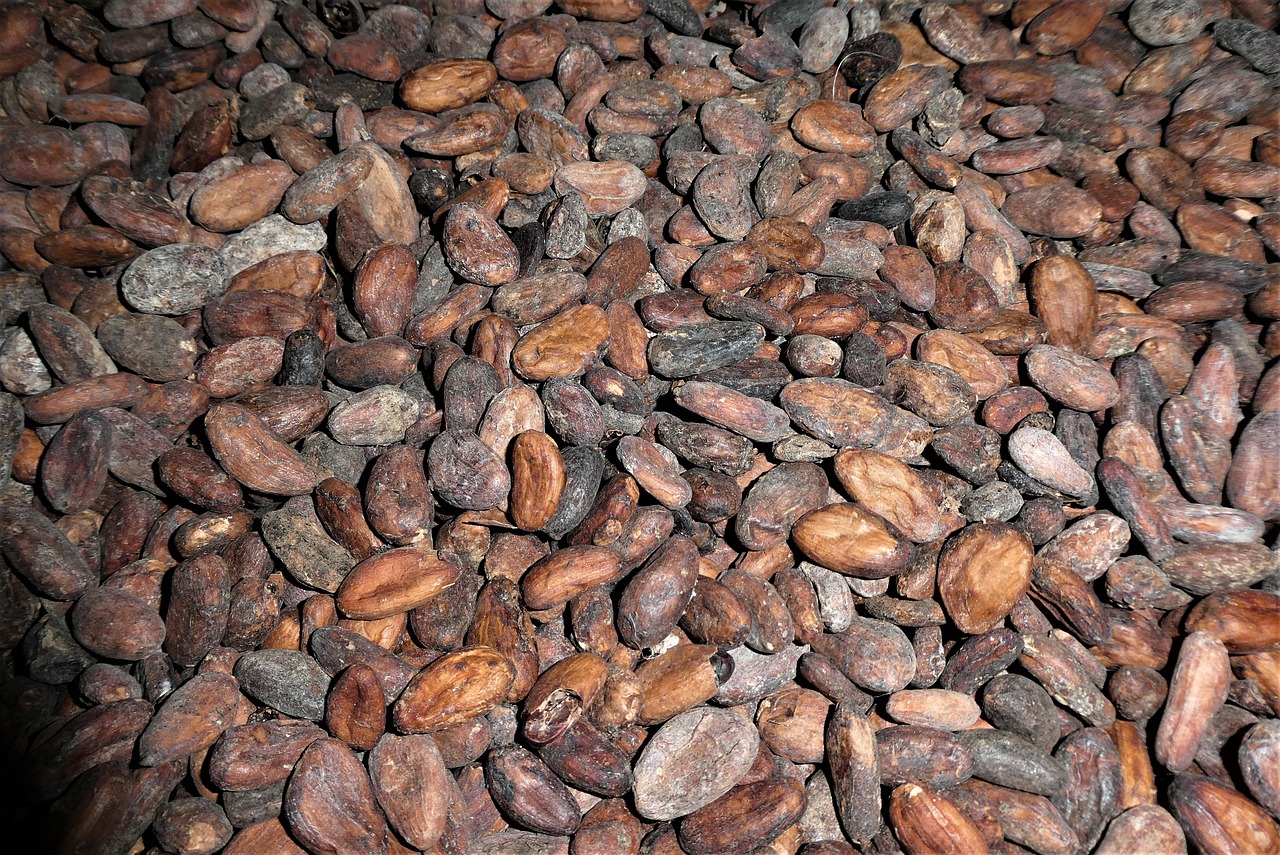
Combining Fabrics and Plastic
When it comes to quilting, the idea of combining traditional fabrics with plastic materials might sound unconventional, but it opens up a world of creativity and innovation. Imagine the stunning visual contrasts and functional benefits that can arise from this unique blend! Utilizing plastic not only adds durability but also introduces a modern twist to your quilting projects. With a little imagination, you can create quilts that are not only beautiful but also practical.
One effective way to start combining these materials is by selecting fabrics that complement the plastic you plan to use. For instance, consider using cotton or linen fabrics alongside brightly colored plastic bags. The softness of the fabric can balance out the rigidity of the plastic, creating a quilt that is both comfortable and eye-catching. Layering is key here; by alternating between fabric and plastic, you can achieve a dynamic texture that elevates your design.
Another exciting aspect of this combination is the opportunity to explore various stitching techniques. Traditional quilting stitches can be adapted to work with plastic, allowing you to create intricate patterns and designs. Whether you opt for straight lines or more elaborate free-motion quilting, the plastic can add a unique flair to your work. Just remember to use the right needle and thread to avoid damaging the plastic material.
Here are a few tips to keep in mind when combining fabrics and plastic:
- Choose the Right Plastics: Not all plastics are created equal. Opt for thicker, sturdier plastic bags that can withstand the stitching process.
- Test Your Techniques: Before committing to a full quilt, experiment with small samples to see how the materials interact.
- Consider Functionality: Think about how the quilt will be used. If it’s meant for outdoor use, the plastic can add waterproof qualities.
Incorporating plastic into your quilting not only enhances the aesthetic appeal but also contributes to sustainability. By repurposing materials that would otherwise end up in landfills, you’re making a positive environmental impact. This approach to quilting is all about embracing creativity while being mindful of our planet.
So, why not give it a try? Dive into your fabric stash, grab some plastic bags, and start experimenting. You might just discover a new passion for mixed-media quilting that transforms your projects into extraordinary pieces of art!
Q: Can I use any type of plastic for quilting?
A: It's best to use thicker, sturdier plastics like shopping bags. Thinner plastics may tear easily during the quilting process.
Q: Will the plastic affect the quilt's warmth?
A: Yes, plastic can add a layer that may reduce breathability, but it can also provide waterproof qualities, making it suitable for outdoor quilts.
Q: How do I care for quilts made with plastic?
A: It's advisable to hand wash or spot clean these quilts to maintain their integrity, especially if they include delicate fabrics.
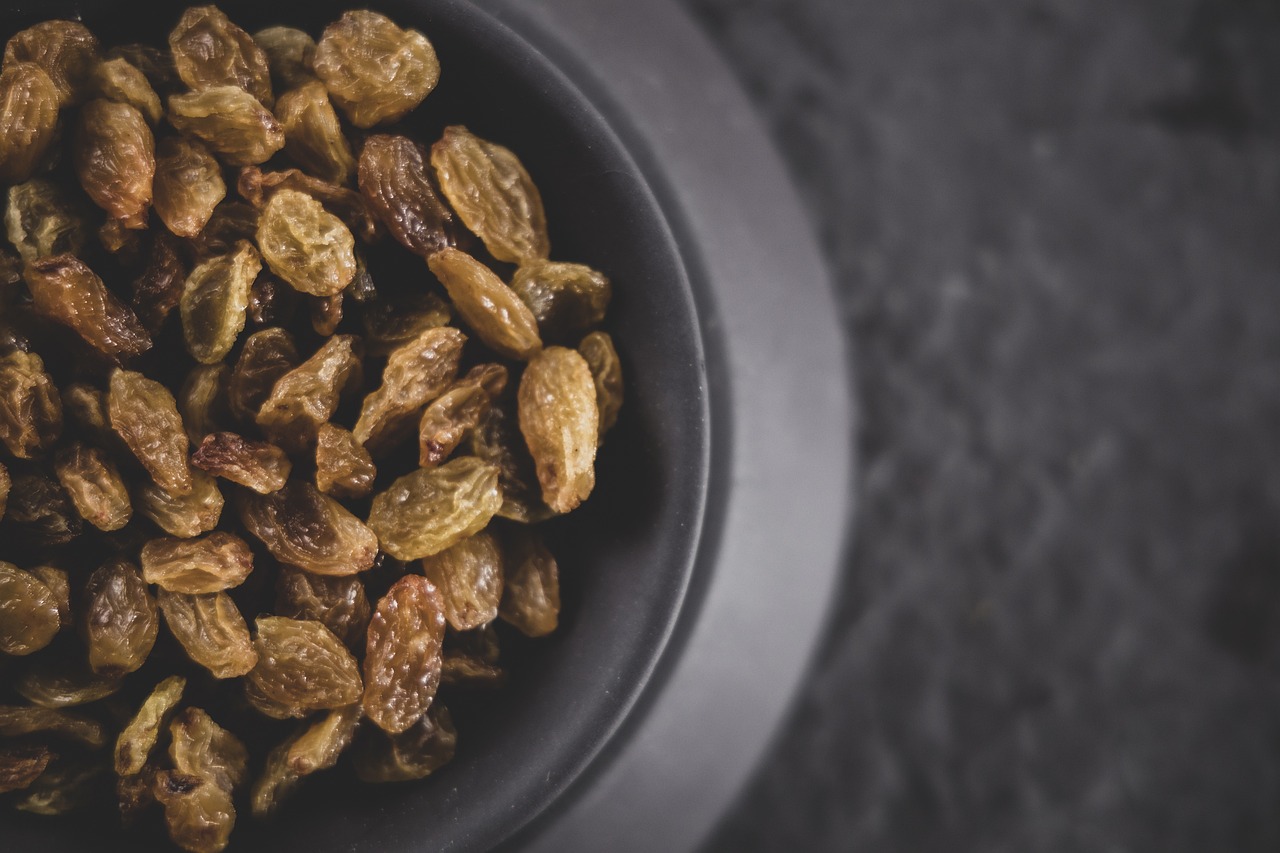
Natural Fibers
When it comes to quilting, the choice of materials can profoundly impact not just the aesthetic but also the sustainability of your projects. like hemp and bamboo are gaining popularity among quilters who are looking to create unique, eco-friendly pieces. These materials bring a wealth of benefits that can elevate your quilting experience and the final product. Imagine wrapping yourself in a quilt that not only looks beautiful but also feels good against your skin and is kind to the environment!
Hemp, for instance, is a powerhouse of a fabric. It is known for its remarkable strength and durability, making it an excellent choice for quilts that are meant to last. Unlike conventional fabrics, hemp is a sustainable option as it grows quickly and requires minimal resources. This means that when you choose hemp for your quilting projects, you’re not just creating a stunning piece; you’re also contributing to a healthier planet. Plus, hemp's natural breathability ensures that your quilts remain comfortable in various climates, making them versatile for year-round use.
Bamboo fabrics, on the other hand, are celebrated for their luxurious softness and moisture-wicking properties. Imagine snuggling up in a quilt made from bamboo after a long day! This fabric is not only gentle on the skin but also possesses natural antibacterial qualities, making it a fantastic choice for those with sensitive skin or allergies. Incorporating bamboo into your quilts can give them a unique texture that is both modern and appealing.
When using natural fibers in your quilting projects, consider the following benefits:
- Eco-Friendliness: Both hemp and bamboo are sustainable resources that require less water and pesticides compared to conventional cotton.
- Durability: These fibers are known for their strength, meaning your quilts can withstand the test of time.
- Comfort: Natural fibers are breathable and soft, ensuring a cozy experience.
Incorporating natural fibers into your quilting projects opens up a world of possibilities. Whether you choose to use hemp for its rugged charm or bamboo for its silky smoothness, you can create quilts that are not only visually stunning but also rich in texture and environmentally conscious. So, why not take a leap and experiment with these unconventional materials? Your quilting journey could lead to a more sustainable and creative path!
Q: What are the advantages of using natural fibers in quilting?
A: Natural fibers like hemp and bamboo are eco-friendly, durable, and comfortable. They provide unique textures and are breathable, making them ideal for quilting.
Q: Can I mix natural fibers with synthetic materials?
A: Absolutely! Mixing natural and synthetic fibers can lead to creative and functional quilts. Just be mindful of the properties of each material to ensure they work well together.
Q: How do I care for quilts made from natural fibers?
A: Generally, quilts made from natural fibers can be machine washed on a gentle cycle. However, always check the specific care instructions for the materials you use.
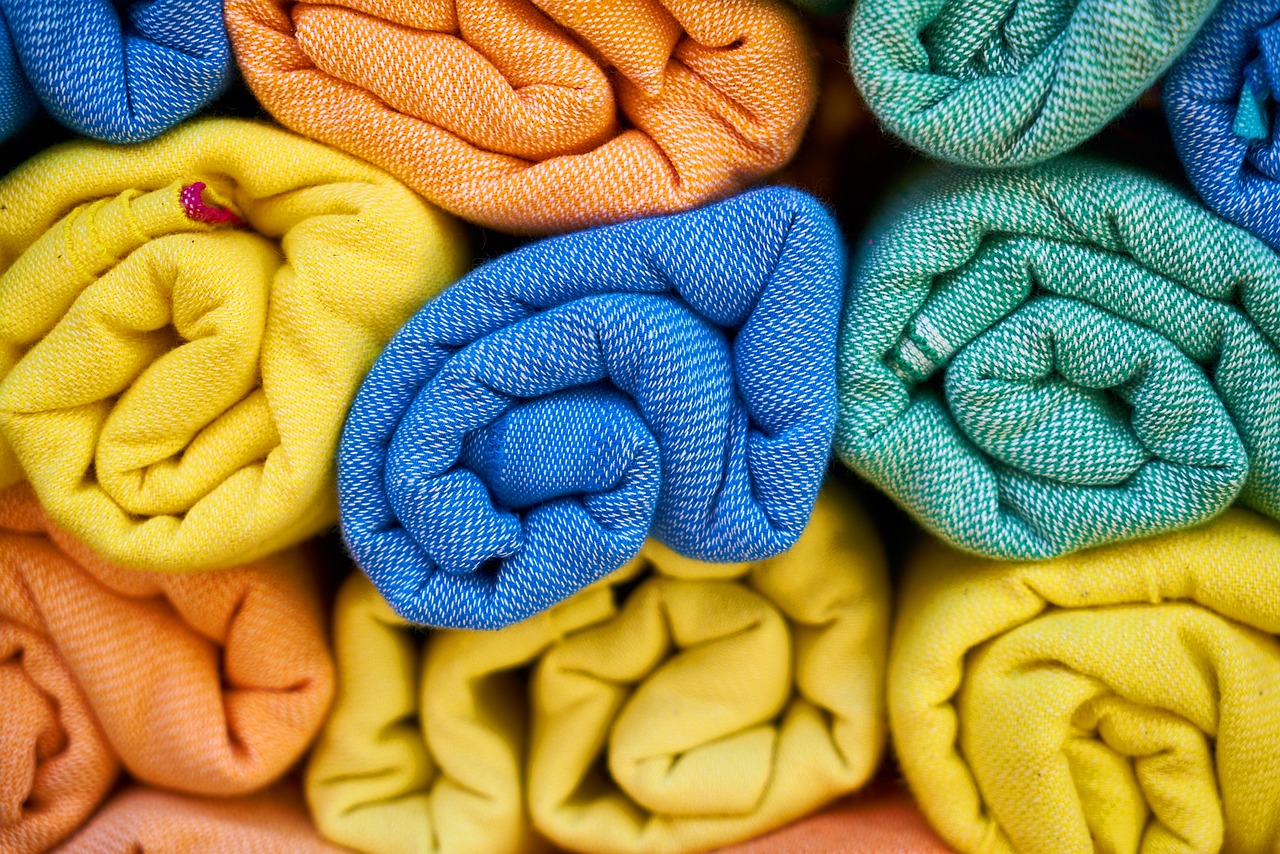
Hemp in Quilting
Hemp is rapidly gaining recognition in the world of quilting, and for good reason. This sustainable material is not only strong and durable but also offers a unique texture that can elevate your quilting projects to new heights. Imagine wrapping yourself in a quilt that not only looks beautiful but is also made from a fabric that has a minimal environmental impact. Hemp is derived from the cannabis plant and is known for its breathability, making it an excellent choice for quilts that need to keep you warm without overheating.
One of the standout features of hemp is its durability. Unlike traditional cotton, hemp fibers are incredibly strong, which means your quilts will stand the test of time. This is especially important for those of us who want our quilts to be cherished heirlooms passed down through generations. Additionally, hemp is naturally resistant to mold and mildew, which adds another layer of longevity to your creations. When you choose hemp, you're not just making a quilt; you're investing in a piece of art that can last a lifetime.
Furthermore, hemp is eco-friendly. It requires far less water to grow compared to cotton and doesn't need pesticides or herbicides, making it a healthier choice for both the planet and the quilter. As more people become aware of the environmental impact of their choices, opting for hemp is a step towards more sustainable crafting practices. Imagine the satisfaction of knowing that your beautiful quilt was made with materials that are kind to the Earth!
When incorporating hemp into your quilting projects, consider blending it with other fabrics for a mixed-media approach. For instance, combining hemp with cotton can create a quilt that showcases the best of both worlds—softness from the cotton and durability from the hemp. This not only enhances the visual appeal of your quilt but also adds a layer of complexity to its texture. Experimenting with different blends can lead to stunning results that are sure to impress.
In terms of care, hemp quilts are relatively low maintenance. They can be machine washed and dried, although it's always a good idea to check the specific care instructions for the fabrics you choose. Over time, hemp becomes softer and more comfortable with each wash, adding to its appeal as a quilting material. So why not give hemp a try? You might just find that it becomes your new favorite fabric for quilting projects.
- Is hemp fabric expensive? Hemp fabric can be slightly more expensive than traditional cotton due to its sustainable production process, but the durability and longevity it offers often make it a worthwhile investment.
- Can I mix hemp with other fabrics? Absolutely! Hemp pairs well with a variety of fabrics, including cotton and linen, allowing you to create unique textures and visual contrasts in your quilts.
- How do I care for hemp quilts? Hemp quilts can be machine washed on a gentle cycle. It's recommended to air dry or tumble dry on low to maintain the fabric's integrity.
- Is hemp fabric suitable for all quilting projects? Yes, hemp is versatile and can be used for a variety of quilting projects, from bed quilts to wall hangings.
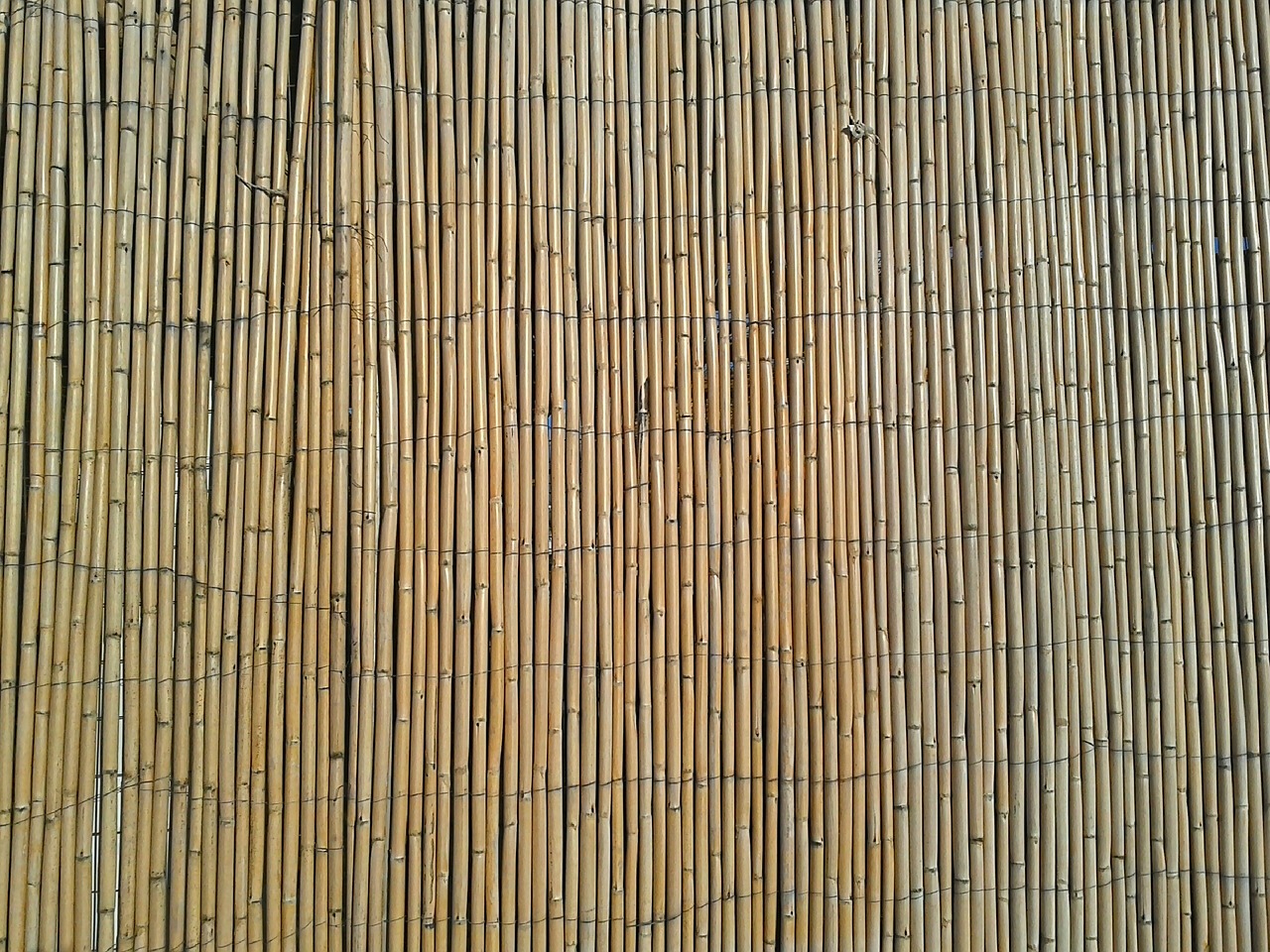
Bamboo Fabrics
Bamboo fabrics are gaining popularity in the quilting community, and for good reason! These materials are not only incredibly soft but also boast a range of properties that make them ideal for quilting. One of the most appealing aspects of bamboo fabric is its moisture-wicking ability. This means that quilts made from bamboo can keep you comfortable by drawing moisture away from your body, making them perfect for all seasons.
Moreover, bamboo is a highly sustainable resource. It grows rapidly without the need for pesticides or fertilizers, which makes it an eco-friendly choice for environmentally conscious quilters. By using bamboo fabrics, you’re not just creating beautiful quilts; you’re also making a positive impact on the planet. Imagine wrapping yourself in a quilt that not only feels luxurious but also aligns with your values of sustainability!
When it comes to incorporating bamboo fabrics into your quilting projects, there are a few tips to consider:
- Blend with Other Fabrics: Bamboo fabric can be combined with cotton or silk to create unique textures and patterns. This blend enhances the overall feel and appearance of your quilt.
- Care Instructions: Bamboo fabrics are generally machine washable, but it’s essential to check the care label. Washing in cold water and air drying can extend the life of your quilt.
- Color Retention: Bamboo fabrics tend to hold dye well, so you can expect vibrant colors that don’t fade easily. This is particularly beneficial if you’re working on a quilt that features bold designs.
In addition to their practical benefits, bamboo fabrics also lend themselves well to creative design possibilities. The natural sheen of bamboo can add a touch of elegance to your quilts, making them stand out in any setting. Whether you’re making a cozy throw for your living room or a decorative piece for your bedroom, bamboo can elevate your work to a new level of sophistication.
Lastly, if you're looking to experiment with bamboo fabrics, consider starting with small projects like pillow covers or wall hangings. This way, you can get a feel for the material and see how it interacts with your quilting style. Once you’re comfortable, you can dive into larger projects, creating stunning quilts that showcase the beauty and benefits of bamboo. So, are you ready to embrace the softness and sustainability of bamboo fabrics in your next quilting venture?
Q: What are the benefits of using bamboo fabric in quilting?
A: Bamboo fabric is soft, moisture-wicking, breathable, and eco-friendly. It provides comfort in various climates and is a sustainable choice for environmentally conscious quilters.
Q: How do I care for quilts made from bamboo fabric?
A: Most bamboo fabrics are machine washable. It’s best to wash them in cold water and air dry to maintain their quality and extend the life of your quilt.
Q: Can bamboo fabric be combined with other materials?
A: Yes! Bamboo fabric blends well with cotton, silk, and other materials, allowing for unique textures and designs in your quilting projects.
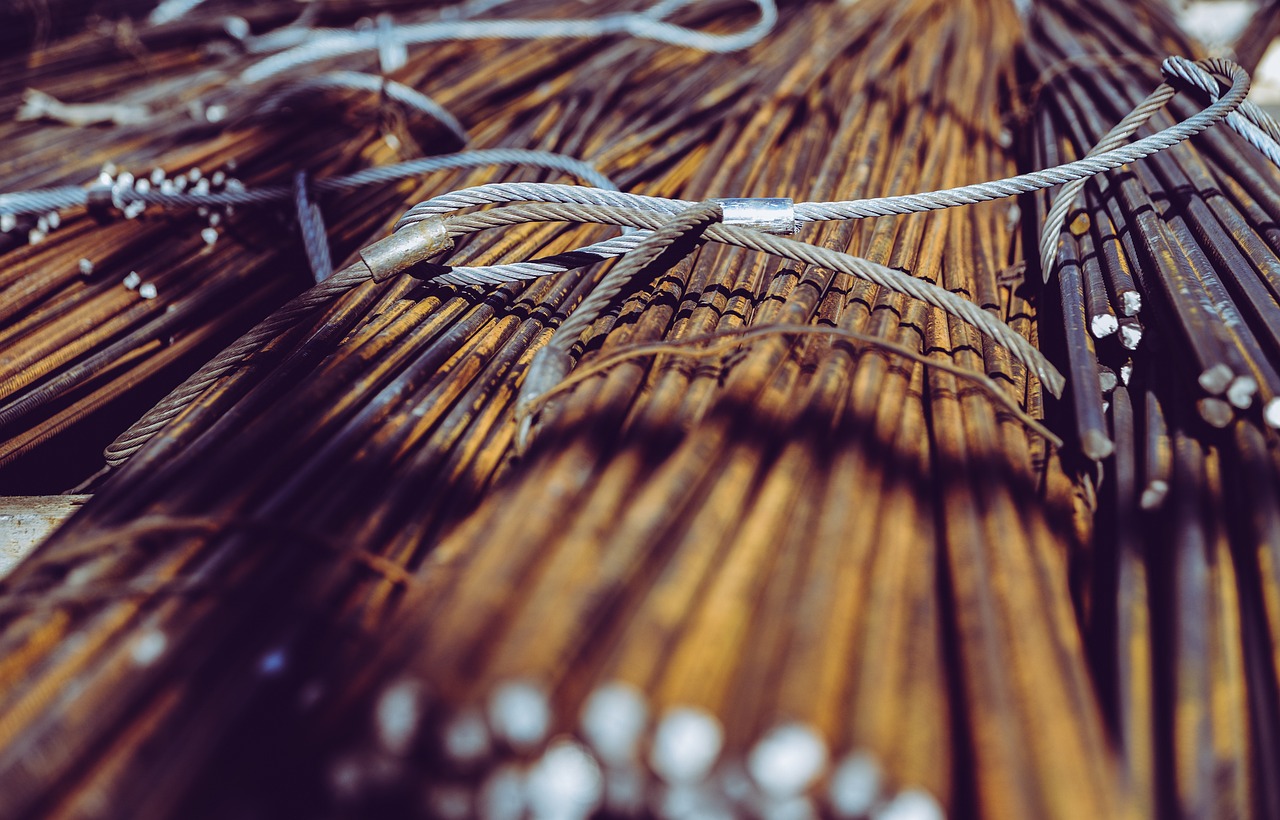
Innovative Batting Options
When it comes to quilting, the choice of batting can significantly influence the final product's warmth, weight, and overall feel. Traditional cotton batting has long been a favorite among quilters, but as we venture into the world of , we discover a plethora of materials that can enhance our quilts in remarkable ways. Have you ever considered using wool, cotton blends, or even synthetic options? These unconventional choices can provide unique benefits that cater to various quilting needs.
One of the standout options is wool batting. Known for its excellent insulation properties, wool batting can keep your quilts cozy in the winter while remaining breathable enough for warmer months. This natural fiber is not only sustainable but also helps regulate temperature, ensuring that your quilts are comfortable year-round. Plus, wool batting tends to hold its shape beautifully, giving your quilts a plush, luxurious feel. If you're looking for a batting that offers both warmth and a lightweight finish, wool might just be your best bet.
Alternatively, synthetic batting presents an affordable and versatile option for quilters. These batts are often made from polyester or a blend of synthetic fibers, making them easy to care for and resistant to shrinkage. This durability is particularly advantageous for quilts that will undergo frequent washing or heavy use. Synthetic batting can also provide a consistent loft, which is essential for achieving that perfect quilted look. With various options available, from low-loft to high-loft, you can choose the right thickness based on your project's requirements.
| Type of Batting | Benefits | Best Uses |
|---|---|---|
| Wool Batting | Excellent insulation, breathability, retains shape | All-season quilts, high-end projects |
| Synthetic Batting | Affordable, easy care, consistent loft | Everyday quilts, children's projects |
| Cotton Blends | Soft, natural feel, reduced shrinkage | Traditional quilts, lap blankets |
Moreover, cotton blends are another innovative batting option that combines the best of both worlds. By mixing cotton with synthetic fibers, quilters can enjoy the softness and natural feel of cotton while benefiting from the durability and reduced shrinkage of synthetics. This combination makes cotton blends an excellent choice for those who want a traditional quilt feel without the worry of excessive wear and tear.
Incorporating these innovative batting options into your quilting projects not only enhances the quality of your quilts but also opens up new avenues for creativity. Imagine the possibilities when you combine different types of batting with unique fabric choices! Whether you're striving for warmth, durability, or a specific aesthetic, there's a batting option out there that can meet your needs.
- What is the best batting for a beginner quilter? For beginners, synthetic batting is often recommended due to its ease of use and affordability.
- Can I mix different types of batting in one quilt? Yes, mixing different types of batting can create interesting textures and effects in your quilt.
- How do I care for quilts with wool batting? Wool batting quilts should be washed gently and air-dried to maintain their shape and integrity.
- Is synthetic batting environmentally friendly? While synthetic batting is durable, it is made from petroleum-based products, so consider using it in conjunction with more sustainable materials.

Wool Batting Benefits
When it comes to choosing the right batting for your quilts, wool batting often stands out as a top contender, and for good reason! This natural fiber offers a plethora of benefits that not only enhance the comfort of your quilts but also improve their overall quality. One of the most significant advantages of wool batting is its incredible insulation properties. It provides warmth without adding excessive weight, making it perfect for cozy quilts that you want to snuggle under during chilly nights.
Another notable feature of wool batting is its breathability. Unlike synthetic alternatives, wool allows air to circulate, which helps regulate temperature and moisture. This property ensures that you stay warm without overheating, making your quilt suitable for use in various climates. Additionally, wool has a natural ability to wick away moisture, keeping you comfortable and dry.
Moreover, wool batting is durable and resilient. It can withstand the rigors of washing and frequent use, maintaining its loft and shape over time. This durability means that your quilts will not only look beautiful but also stand the test of time, becoming treasured heirlooms that can be passed down through generations. The natural crimp of wool fibers also contributes to its ability to hold shape and resist flattening, which is a common issue with other types of batting.
In terms of maintenance, wool batting is relatively easy to care for. It can be washed gently by hand or on a delicate cycle in the washing machine. However, it’s essential to follow specific care instructions to ensure longevity. Here’s a quick overview of how to care for wool batting:
| Care Tip | Description |
|---|---|
| Washing | Use cold water and a gentle detergent. Avoid fabric softeners. |
| Drying | Air dry flat to maintain shape; avoid direct sunlight. |
| Storage | Store in a cool, dry place to prevent moisture and pests. |
Lastly, wool batting is a fantastic choice for those who are environmentally conscious. Being a natural material, it is biodegradable and sustainable, making it a responsible option for eco-friendly quilting projects. By choosing wool batting, you’re not only enhancing your quilt’s quality but also making a positive impact on the environment.
In summary, the benefits of using wool batting in your quilting projects are manifold. From its superb insulation and breathability to its durability and eco-friendliness, wool batting is a versatile option that can elevate your quilting experience. So, the next time you’re planning a new quilt, consider incorporating wool batting for a cozy, long-lasting, and environmentally conscious creation!
- What is wool batting made from? Wool batting is made from natural sheep wool, which is processed and carded into a soft, fluffy material.
- Can I machine wash quilts with wool batting? Yes, but it's essential to use a gentle cycle and cold water to preserve the integrity of the wool.
- Is wool batting suitable for all types of quilts? Wool batting is versatile and works well for various quilt types, especially those intended for colder weather.
- How does wool batting compare to synthetic batting? Wool batting is typically warmer, more breathable, and more durable than synthetic options, making it a preferred choice for many quilters.
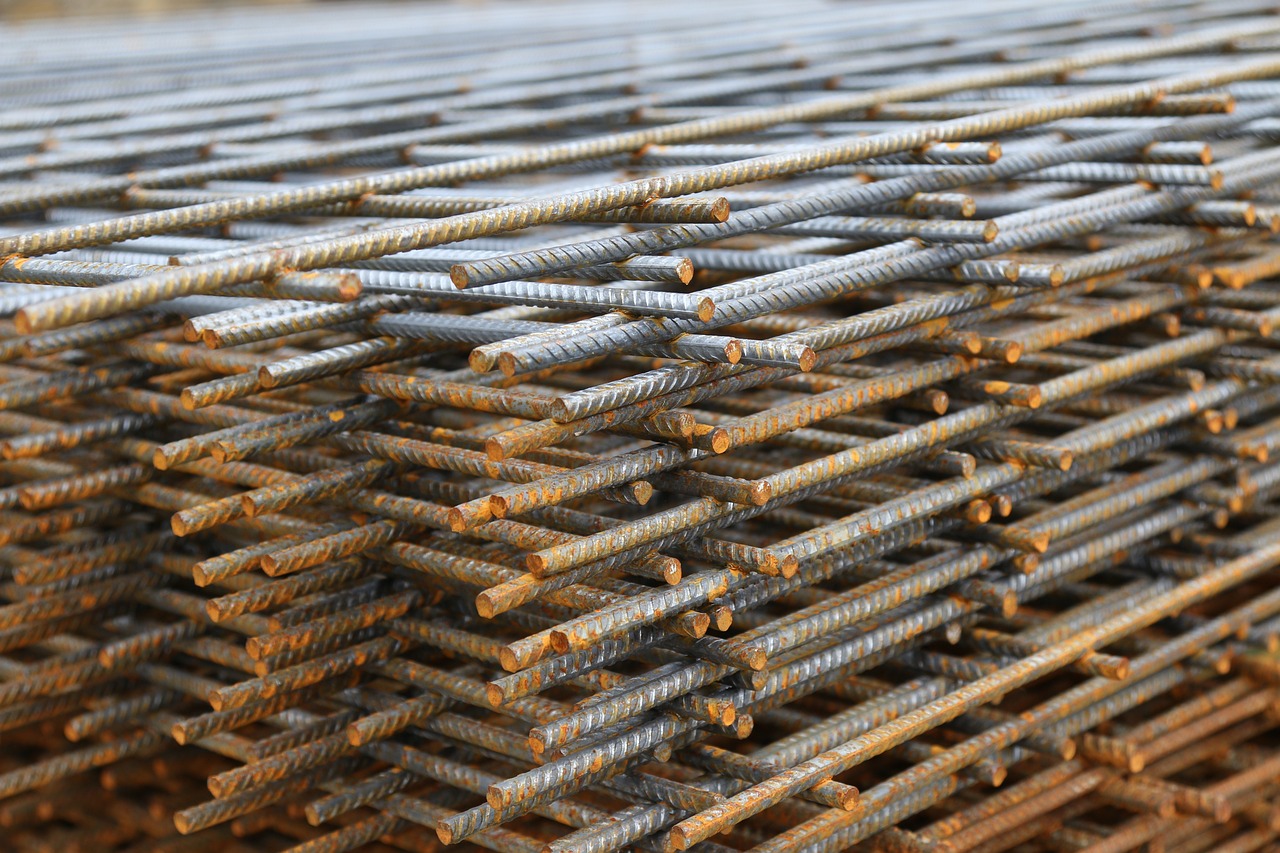
Synthetic Batting Choices
Synthetic batting has become a go-to choice for many quilters due to its versatility and practicality. When you think about batting, you might picture fluffy layers that add warmth, but synthetic options elevate that concept to a new level. One of the biggest advantages of synthetic batting is its affordability. Unlike natural fibers that can sometimes come with a hefty price tag, synthetic materials are often more budget-friendly, making them accessible for quilters of all skill levels. Plus, they are typically machine washable and dryable, which means your quilts can withstand the rigors of everyday life without losing their shape or comfort.
There are several types of synthetic batting available, each with its own unique properties. For instance, polyester batting is a popular choice because it provides excellent loft and resilience. This means your quilts will maintain their shape over time, even after multiple washes. Another option is the blend of polyester and cotton, which combines the best of both worlds: the soft feel of cotton with the durability of polyester. This blend can also help regulate temperature, making your quilts cozy without being too heavy.
When selecting synthetic batting, consider the following factors to ensure you choose the right one for your project:
- Loft: The thickness of the batting affects the overall look and feel of your quilt. Higher loft provides more warmth and a puffier appearance, while low loft offers a flatter finish.
- Weight: Heavier batting can add warmth but may also make your quilt bulkier. Choose a weight that suits your intended use, whether it’s for a cozy throw or a lightweight summer quilt.
- Ease of use: Some batting options are easier to work with than others. Look for products that are pre-washed or needle-punched for added convenience.
For quilters who are concerned about the environment, there are also eco-friendly synthetic batting options available. These are made from recycled materials and offer a sustainable choice without compromising quality. By choosing eco-friendly batting, you’re not just making a quilt; you’re making a statement about your values and commitment to the planet.
In conclusion, synthetic batting choices offer a range of benefits that cater to various quilting needs. Whether you prioritize affordability, ease of care, or eco-friendliness, there’s a synthetic batting option out there that will enhance your quilting experience. As you experiment with different types, you’ll discover how they can transform your quilts, making them not just functional but also beautiful works of art.
1. What is the best type of synthetic batting for beginners?
For beginners, polyester batting is often recommended due to its affordability and ease of use. It provides good loft and is forgiving during the quilting process.
2. Can synthetic batting be used for hand quilting?
Yes, synthetic batting can be used for hand quilting. However, you may want to choose a low loft batting to make the hand quilting process easier.
3. How do I care for quilts made with synthetic batting?
Quilts made with synthetic batting are typically machine washable and can be dried on low heat. Always check the care instructions on the batting packaging for specific recommendations.
4. Are there any downsides to using synthetic batting?
While synthetic batting is durable and easy to care for, some quilters find that it doesn’t breathe as well as natural fibers, which can affect comfort in warmer climates.
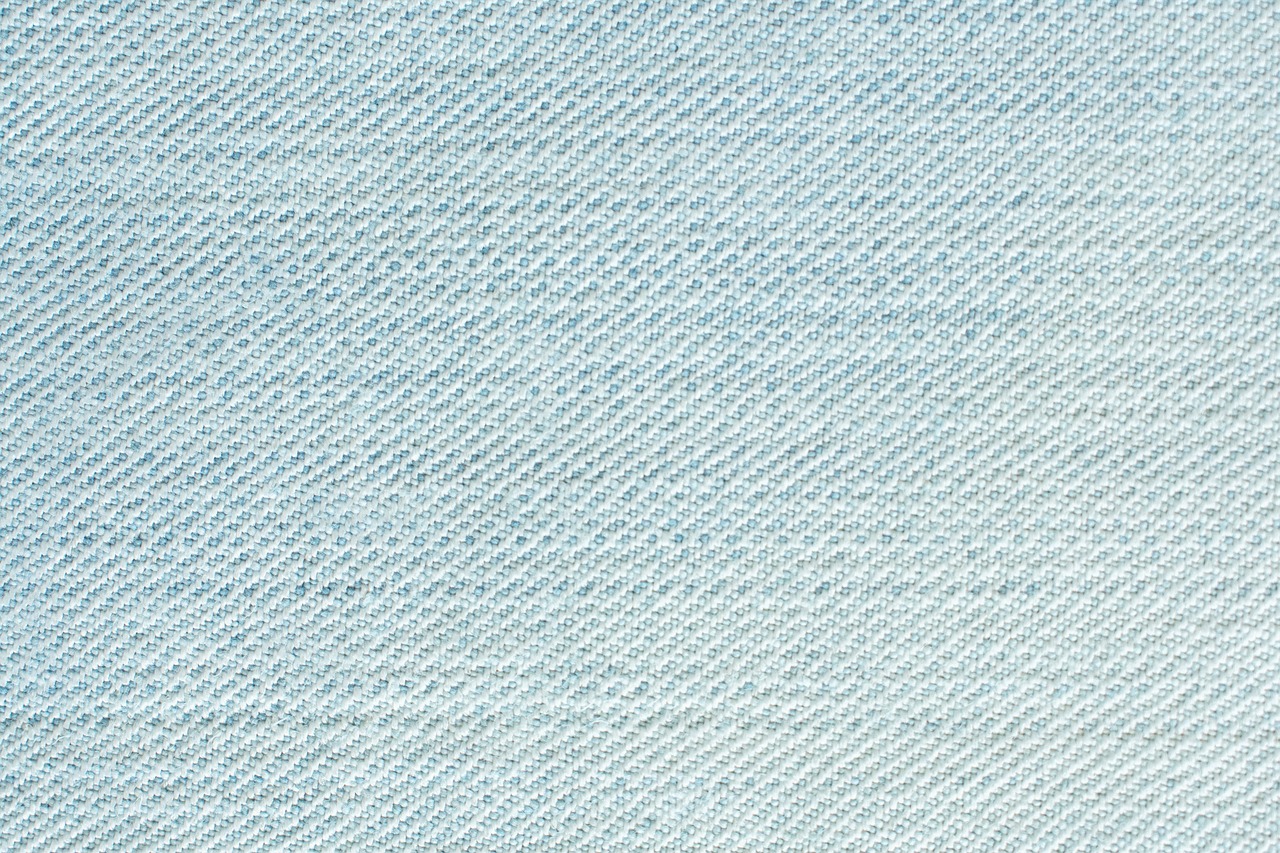
Upcycled Textiles
Upcycling textiles is not just a trend; it's a movement that celebrates creativity and sustainability. Imagine taking an old shirt that has seen better days, or a pair of jeans that no longer fit, and transforming them into a stunning quilt that tells a story. This practice not only gives new life to discarded materials but also adds a unique personal touch to your quilting projects. By using upcycled textiles, you're not only being eco-friendly but also expressing your individuality. It's like giving a second chance to fabrics that have a history and character of their own.
When it comes to upcycling, the possibilities are endless! You can use a variety of materials, from old linens and curtains to worn-out clothing. The key is to choose fabrics that resonate with you, as they will add depth and meaning to your quilt. For instance, using a beloved grandmother's old tablecloth can infuse your quilt with nostalgia and warmth. But how do you go about selecting the right textiles? Here are some tips:
- Assess Fabric Quality: Look for fabrics that are still in good condition, free from major stains or tears. Remember, the better the quality, the longer your quilt will last.
- Consider Compatibility: Ensure that the fabrics you choose can be easily sewn together. Different fabric weights and textures can affect the final look and feel of your quilt.
- Color Palette: Think about how the colors of your upcycled textiles will work together. A cohesive color story can enhance the overall aesthetic of your quilt.
Once you've gathered your materials, it's time to get creative! Upcycling allows for a range of techniques that can make your quilt truly one-of-a-kind. Patchwork is a popular method, where you can sew together various pieces of fabric to create a beautiful mosaic. Alternatively, you might explore appliqué, where you sew smaller pieces onto a larger fabric base, adding intricate designs and patterns. This technique not only adds visual interest but also allows you to incorporate different textures into your work.
Moreover, upcycled textiles can evoke memories and emotions, turning your quilt into a cherished keepsake. Imagine wrapping yourself in a quilt made from your child's old t-shirts or your partner's favorite flannel shirt. Each stitch becomes a reminder of moments shared and experiences lived. In this way, upcycling textiles is not just about creating something new; it's about honoring the past while looking toward the future.
In conclusion, upcycled textiles offer a fantastic way to enhance your quilting projects while promoting sustainability. The process of selecting, transforming, and sewing these materials can be incredibly rewarding, leading to quilts that are not only functional but also rich in personal history. So, the next time you consider tossing out an old piece of clothing or fabric, think twice! You might just have the makings of your next favorite quilt waiting to be born.
Q: What types of textiles can I upcycle for quilting?
A: You can upcycle a variety of textiles, including old clothing, linens, curtains, and even fabric scraps. The key is to ensure they are in good condition and suitable for sewing.
Q: How do I know if the fabric is suitable for quilting?
A: Look for fabrics that are durable and have a good weight. Avoid overly stretchy or fragile materials, as they can be challenging to work with.
Q: Can I mix different types of fabrics in my upcycled quilt?
A: Absolutely! Mixing different fabrics can add texture and visual interest to your quilt. Just be mindful of how they interact in terms of weight and drape.
Q: What techniques work best for upcycling textiles?
A: Popular techniques include patchwork and appliqué. These methods allow you to creatively combine various fabric pieces and create unique designs.
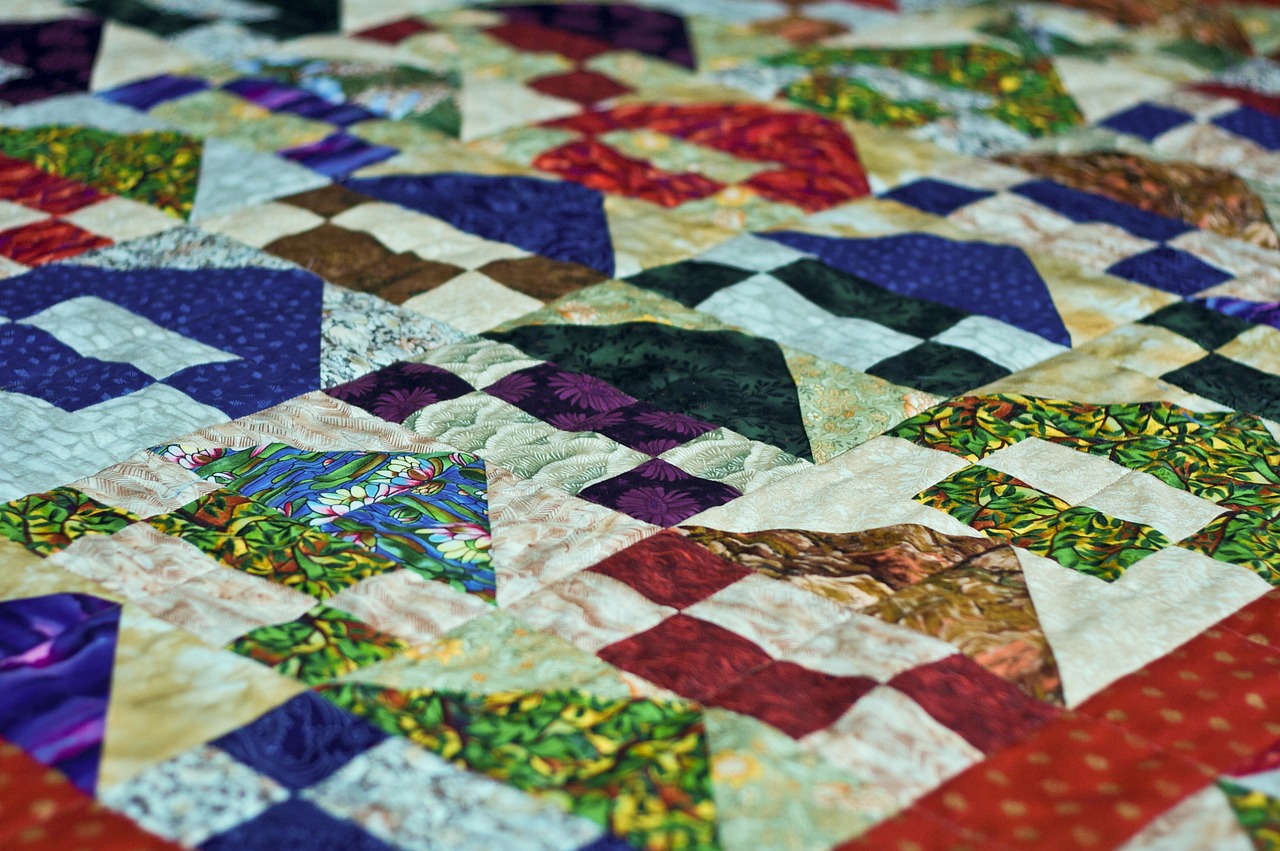
Choosing the Right Textiles
When it comes to quilting, the choice of textiles can significantly impact not only the aesthetics but also the functionality of your finished piece. is akin to selecting the perfect ingredients for a recipe; the right combination can make all the difference! You want to ensure that the fabrics you select not only complement each other visually but also work well together in terms of texture, weight, and durability.
First and foremost, consider the source of your upcycled textiles. Old clothing, linens, and other fabric items can provide a wealth of material, but it’s essential to assess their condition. Look for fabrics that are free from stains, tears, or excessive wear. A good rule of thumb is to check the seams and edges for any signs of fraying. Fabrics that have been well cared for will yield the best results for your quilting project.
Next, think about the weight and texture of the fabrics. Different weights can affect how your quilt drapes and feels. For instance, lightweight cottons may be perfect for a summer quilt, while heavier fabrics like denim or canvas can add warmth and durability. Texture is also crucial; mixing smooth and textured fabrics can create an interesting visual dynamic. Imagine the feel of a soft cotton paired with a rugged linen—such contrasts can bring your quilt to life!
Additionally, consider the color palette and pattern of your textiles. A cohesive color scheme can unify your quilt, while contrasting patterns can add a playful touch. Don’t shy away from experimenting with bold colors or unique prints; after all, quilting is an art form! You might even find that some patterns tell a story or evoke a memory, adding a personal touch to your work. In fact, many quilters find joy in selecting fabrics that resonate with their personal experiences or the theme of the quilt they are creating.
Lastly, it’s important to remember that not all fabrics are created equal. Some may require special care or handling, so always check the fabric content and care instructions. For example, fabrics made from natural fibers like cotton and linen tend to be more forgiving and easier to work with than synthetic blends. Understanding these nuances can save you a lot of headaches down the line.
In conclusion, choosing the right textiles for your quilting projects involves a combination of careful consideration and creative flair. By paying attention to the source, weight, texture, color, and care instructions of your fabrics, you can create stunning quilts that not only look great but also stand the test of time.
- What types of fabrics are best for quilting? Generally, 100% cotton is the most popular choice due to its durability and ease of use. However, you can also use linen, flannel, and even some synthetic fabrics for unique effects.
- Can I mix different fabric types in one quilt? Absolutely! Mixing fabrics can add texture and interest to your quilt. Just be mindful of the weight and care instructions of each fabric.
- How do I care for my quilt after it's finished? Most quilts can be machine washed on a gentle cycle. However, always check the care instructions for each fabric used to ensure longevity.
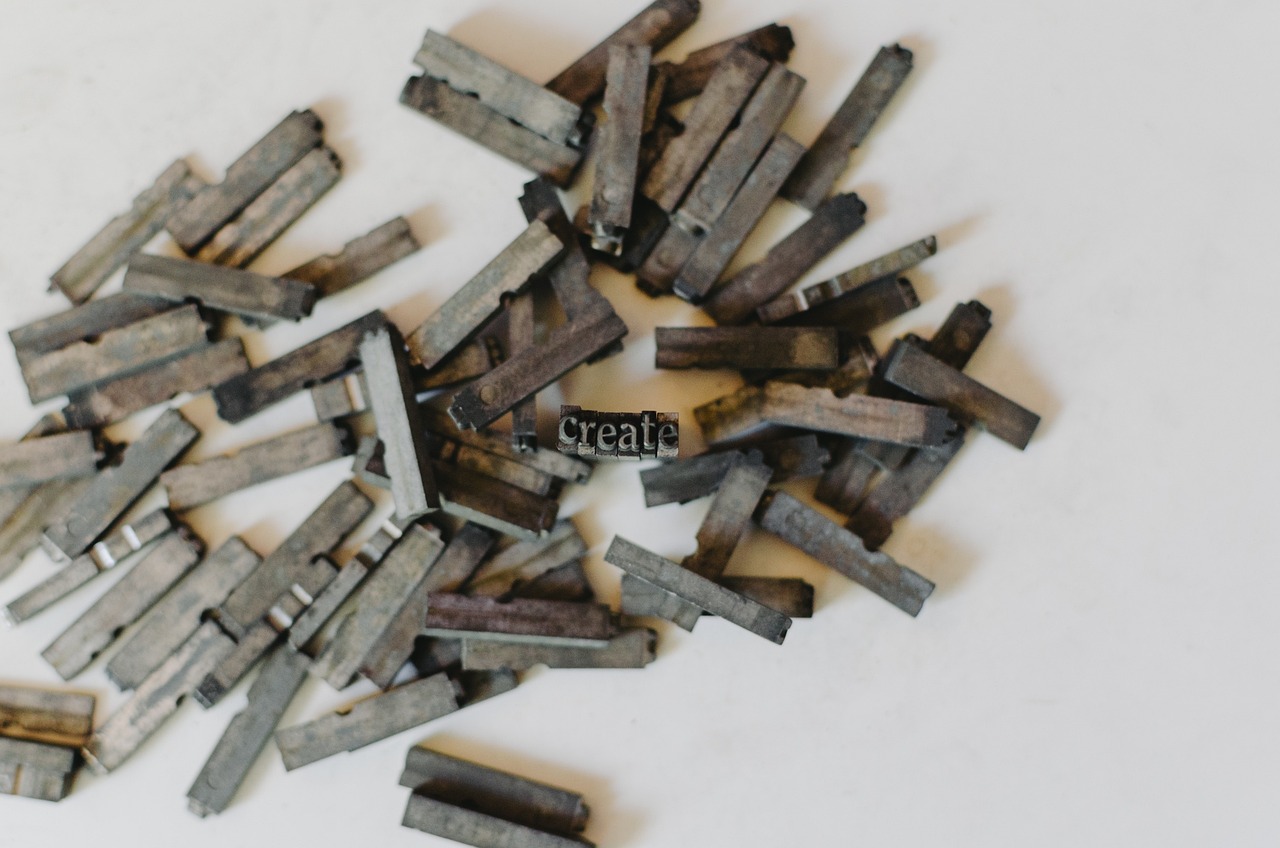
Creative Techniques for Upcycling
When it comes to upcycling textiles for quilting, the possibilities are as vast as your imagination! One of the most exciting aspects of this process is the ability to breathe new life into old materials, transforming them into stunning quilted masterpieces. Have you ever thought about how a simple piece of fabric can tell a story? By using upcycled textiles, you not only create something beautiful but also preserve memories and history. Here are some creative techniques to consider:
First off, patchwork is a classic method that allows you to combine different pieces of fabric into a cohesive design. This technique is perfect for using up smaller scraps from old clothes or linens. You can mix and match colors, patterns, and textures to create a quilt that is truly one-of-a-kind. Imagine a quilt that features patches from your favorite childhood shirt or a beloved pair of jeans! Each patch can evoke a memory, making your quilt not just a blanket, but a cherished keepsake.
Another innovative technique is appliqué, where you sew additional fabric shapes onto a quilt top. This method opens up a world of design possibilities, from simple shapes to intricate designs. You can use upcycled fabric to create flowers, animals, or even abstract patterns. The beauty of appliqué is that it allows you to play with layering and texture, adding depth to your quilt. For instance, layering a soft cotton fabric over a more textured material can create a striking visual effect that draws the eye.
Moreover, consider incorporating embroidery into your upcycling projects. Adding hand-stitched details can enhance the overall aesthetic of your quilt and give it a personal touch. You can embroider names, dates, or even little doodles that resonate with you. This technique not only beautifies your quilt but also makes it a unique piece of art that reflects your personality.
If you're feeling adventurous, you might want to explore the technique of fabric weaving. This method involves cutting fabric strips and weaving them together to create a new textile. It's a fantastic way to utilize those smaller scraps that might otherwise go to waste. The resulting fabric can be used as a quilt top or even for smaller projects like pillows or bags. Plus, the weaving process can be quite therapeutic, allowing you to unwind while being creative.
Lastly, don't forget about the potential of mixed media. Combining fabric with other materials such as lace, buttons, or even beads can add an unexpected twist to your quilt. This technique encourages you to think outside the box and experiment with different textures and visual elements. You might find that a few well-placed buttons can turn a simple quilt into a playful masterpiece!
In conclusion, upcycling textiles for quilting is not just about saving materials; it's about embracing creativity and storytelling. These techniques allow you to express yourself while also being environmentally conscious. So, gather those old clothes, linens, and fabric scraps, and let your imagination run wild!
- What types of fabrics are best for upcycling? Look for fabrics that are durable and have a good weight, such as cotton, linen, or blends. Avoid fabrics that are too thin or fragile.
- Can I use non-fabric items in my quilts? Yes! Items like lace, buttons, and even paper can be incorporated into your quilting projects to add unique elements.
- How do I ensure my upcycled quilt lasts? Make sure to wash and prepare your fabrics properly before sewing. Using quality stitching techniques will also help your quilt withstand wear and tear.
- Is upcycling more sustainable than buying new fabrics? Absolutely! Upcycling helps reduce waste and minimizes the demand for new materials, making it a more eco-friendly choice.
Frequently Asked Questions
- What are some unconventional materials I can use for quilting?
You can explore a variety of unconventional materials for quilting, including recycled fabrics, plastic bags, natural fibers like hemp and bamboo, innovative batting options, and upcycled textiles from old clothing or linens. Each of these materials brings unique textures, sustainability, and creativity to your quilting projects.
- How do I source recycled fabrics for my quilting projects?
Sourcing recycled fabrics can be an exciting adventure! You can check out thrift stores, garage sales, and fabric swaps. Additionally, online marketplaces and local community groups often have resources for finding unique recycled materials. Don't forget to look through your own closet for old clothes that can be repurposed!
- Can plastic bags really be used in quilting?
Absolutely! Plastic bags can be transformed into durable quilted pieces. By cutting, fusing, and stitching them, you can create functional and visually striking quilts. It's a fun way to give new life to materials that would otherwise end up in the landfill!
- What are the benefits of using natural fibers like hemp and bamboo?
Natural fibers such as hemp and bamboo are not only eco-friendly but also offer unique benefits. Hemp is known for its strength and breathability, making it a fantastic choice for durable quilts. Bamboo fabrics, on the other hand, are incredibly soft and have moisture-wicking properties, providing comfort and functionality.
- What innovative batting options can enhance my quilt?
When it comes to batting, you have some fantastic options! Wool batting is excellent for insulation and breathability, while synthetic batting offers affordability and ease of care. Cotton blends are also popular, providing a balance of warmth and weight. Experimenting with different batting materials can significantly improve the quality of your quilt!
- How can I upcycle textiles for my quilting projects?
Upcycling textiles is a wonderful way to add a personal touch to your quilts. You can transform old clothing or linens into beautiful quilted pieces by using techniques like patchwork and appliqué. Just make sure to assess the fabric quality and compatibility before diving in!
- What techniques can I use for combining fabrics and plastic in my quilts?
Combining fabrics and plastic can yield stunning results! You can layer traditional fabrics with plastic materials, using stitching techniques to create visual contrasts. Experiment with fusing methods to ensure durability, and don't hesitate to get creative with your designs!



















